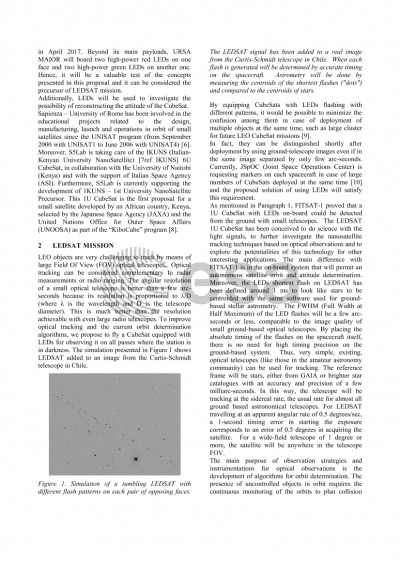Document details

Abstract
The increasing number of small satellite cluster launches (i.e. CubeSats) leads to a greater risk of confusion and collision after deployment. This encourages the European States to further improve their capabilities in space surveillance. This paper describes the “LEDSat” project that is jointly developed by University of Michigan and the Sapienza University of Rome.
The main aim is to develop and launch at the same time two 1U CubeSats equipped with Light Emitting Diodes (LEDs) for optical tracking with ground-based telescopes. The number of passes in which each CubeSat is visible from a network of ground-based telescope is increased by having LEDs as an on-board payload to actively illuminate the satellite. Thus, it is possible to increase the accuracy and precision of LEO orbits.
Moreover, by flashing the LEDs with a different pattern for each satellite it will be possible to distinguish them after release in-orbit to minimize the confusion between objects.
This paper outlines the preliminary design of the Sapienza LEDSat. The analysis has been performed by using a concurrent engineering is a work methodology supported by S5Lab (Sapienza Space System and Space Surveillance Laboratory) research team. The system architecture of the Cubesat with the main mission parameters and design drivers are outlined, with emphasis on its main subsystems. The definition of the main important parameters and features of the on-board LEDs configuration are described by reporting the selected configurations for both space and the ground segments.
Preview






